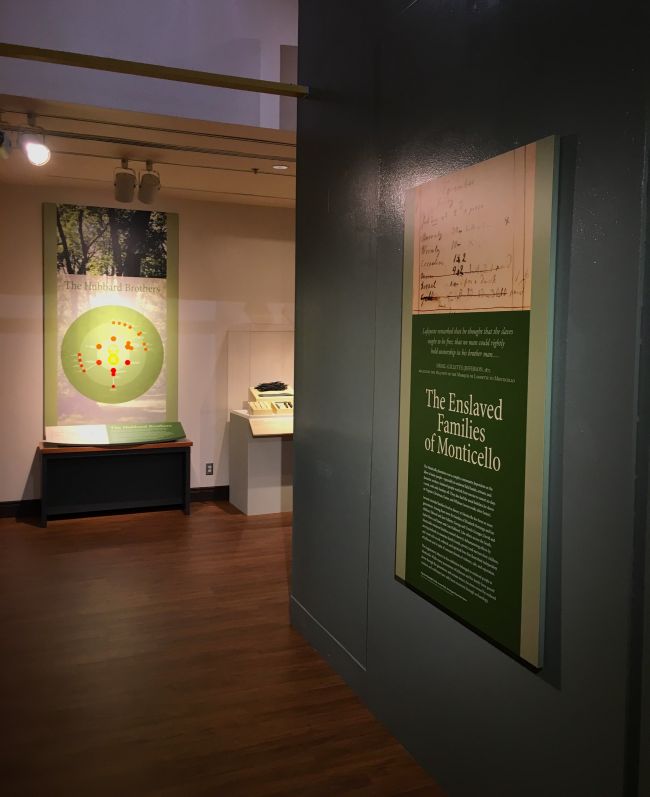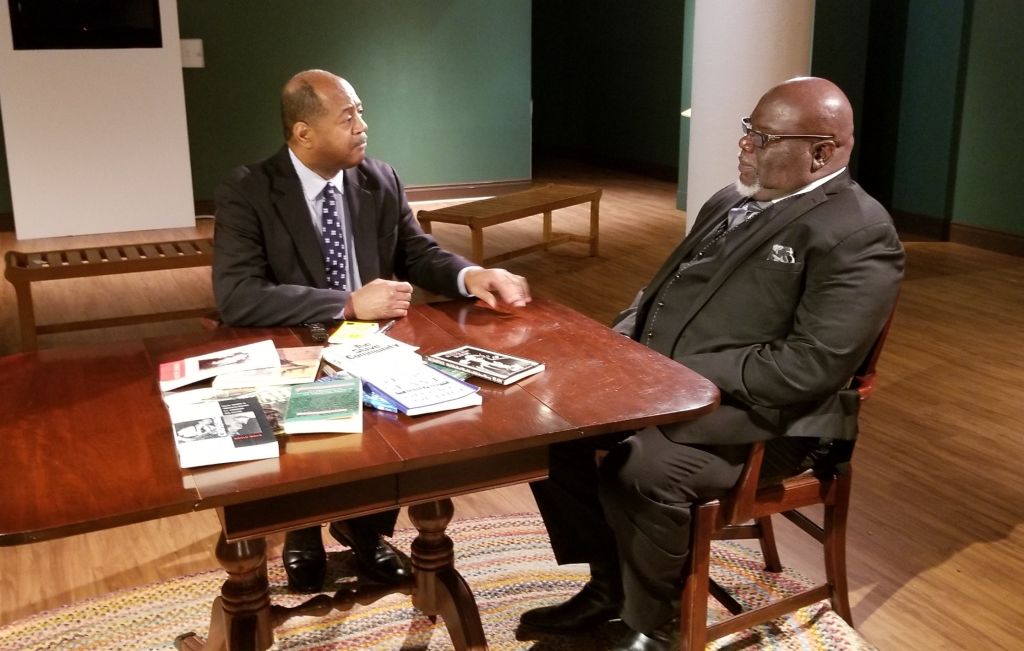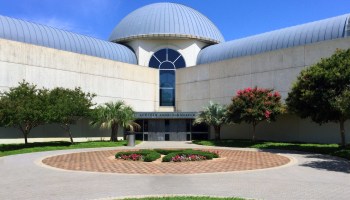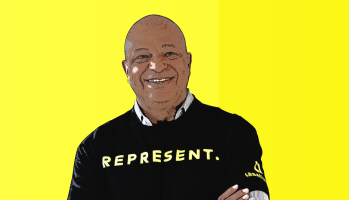“To survive with little nutrition, to make it across dangerous waters, to survive the peril of being in boats with other black people that they did not know nor speak their language…It’s an amazing story when you think about it” — Bishop T.D. Jakes
DALLAS — Bishop T.D. Jakes paused briefly to reflect on long ago autumns while viewing a poignant exhibit about Thomas Jefferson and slavery inside the African American Museum of Dallas.
Jakes, the influential Pastor of The Potter’s House, walked through a powerful three-gallery exhibition that featured detailed accounts of how enslaved Africans labored on Thomas Jefferson’s Virginia plantation, Monticello, some 200 years ago.
“As an African-American I think it’s really difficult for you not to be passionate about this,” Jakes said during an interview inside the museum. “But even as an American in general I think it is a part of our history that gets swept up under the rug and yet it has so much to do with the current dilemmas that we face today and it has all the world to do with any solutions that are derived for us to be more harmonious as a people in this country.”
Jakes is the honorary co-chair of a new traveling exhibit, “Slavery at Jefferson’s Monticello: Paradox of Liberty,” which will run from Sept. 22 to Dec. 21 at the African American Museum of Dallas.
The exhibition tells the story of slavery at Monticello, Jefferson’s 5000-acre plantation, from the perspective of Africans who Jefferson enslaved.
More than 300 artifacts, works of art and documents representing Jefferson’s legacy of slavery be on display. Dallas is the first city to host the exhibit that will feature additional objects that have never left Monticello. Other stops for the exhibit include Detroit, Richmond and then the West Coast in 2019.

(Photo: African American Museum of Dallas )
“You know, it’s interesting, as I was walking around museum, reading some of the quotes that were attributed to Jefferson, the conflict that he had while being an advocate for emancipation on one hand yet he was a slave owner on the other,” Jakes said. “I think that conflict is indicative of where we find ourselves today as a people that many people in this country have not resolved their own inner turmoil about how they see the assimilation of other cultures into our society, what role they should be, and the tug and pull between those two issues.”
Gayle Jessup White knows something about inner turmoil, too, because she is still processing a complex past: Her African ancestors – men, women and children — were enslaved by Thomas Jefferson.
Jessup White, community engagement officer for Thomas Jefferson’s Monticello, and a descendant of Thomas Jefferson and Sally Hemings, helped facilitate the exhibit opening in Dallas.
“This is a story about my family,” Jessup White said last week. “And this exhibit humanizes people. You will see tools that were used by enslaved people, people who were cast aide, people who were left behind, but these people were the backbone of America.”
Jessup White is an integral part of Monticello’s African American experience: DNA tests have proved that Sally Hemings was White’s great-great-great-great aunt. More than 80 members of the Hemings family lived in slavery at Monticello over five generations.
“In this exhibit, you will see the stories of six families who lived and worked in slavery at Monticello, we know of these families because Thomas Jefferson took such copious notes,” she said.

Sally Hemings is considered one of the most important African-American women in history. At just 16 years old and a slave, Hemings negotiated with one of the most powerful men in the nation, ensuring she would receive “extraordinary privileges” and achieve freedom for her children. Jefferson, the author of The Declaration of Independence and America’s third President, fathered at least six children with Hemings.
“We’ve given back to Sally Hemings her humanity,” White said. “The objective of this exhibition is a bit different —we want visitors to understand Sally Hemings as a person through her family roles as a mother, daughter and sister. We’re not just talking about Thomas Jefferson and his family, we’re talking about the enslaved people and their families, too.”
“This is an American story because these enslaved people helped shape America,” Jessup White added. “This exhibit is a big deal: There is lots to see, lots to take in, and lots to learn.”
Jakes said the legacy of slavery is complex — but well worth exploring.
“I think it’s important that we own the fact that our founding fathers were flawed in that way and it helps us to better understand the potentials and possibilities of the recurrence of that in contemporary society,” Jakes said. “I think it’s just a very important look at where we came from.
Dr. Harry Robinson, President and CEO of Dallas’ African American Museum, said the Monticello exhibit is important and distinctive.
“This is information that children won’t get in textbooks,” Robinson said. “This exhibit tells about slavery from the enslaved people’s point of view – and that’s a new perspective. This is their story.”
Robinson added that residents of Dallas – Black and white – can benefit from the exhibit.
“Dallas is sometimes considered a cultural outpost and when we established this museum, we were trying to fill the void,” Robinson said. “This exhibition will help us bring about discussions of [racial] issues that we have been dodging for some time.”
Meanwhile, Jakes said America must come to grips with slavery to effectively confront contemporary racial issues.
“If this country is going to live out its highest ideals,” Jakes said, “were going to have to be very intentional in listening, and learning, and not muting the voice of the person who cries out in the night and says I have been oppressed.”
PHOTO: (Museum) Joseph G. Thomas and Jose Galvan, Dallas African-American Museum
HEAD BACK TO THE BLACKAMERICAWEB.COM HOMEPAGE
A New Traveling Exhibit Highlights Thomas Jefferson’s Legacy Of Slavery was originally published on blackamericaweb.com















